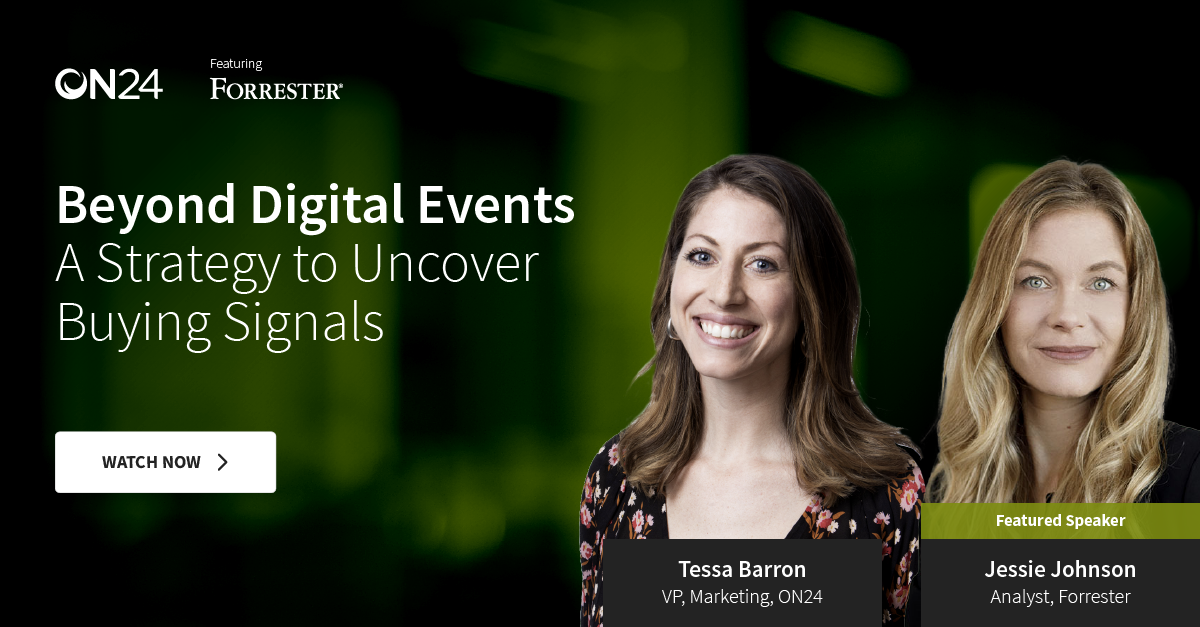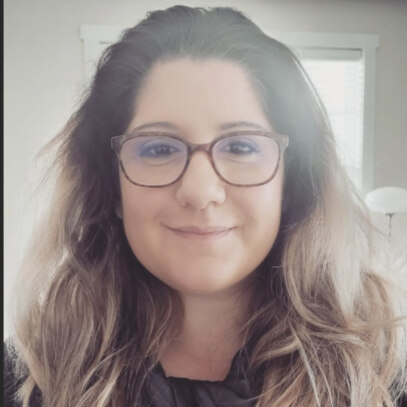How to Create a Successful Content Marketing Strategy

With great marketing content comes great responsibility. Brands need to know how to cut through the noise to reach their intended audience and ultimately convert leads into new clients. And as a top-tier provider for both webcasting and digital engagement technology, the ON24 Intelligent Engagement Platform can provide marketers with the insights they need to build that strategy and drive lead conversion.
Ready to learn how to build a content marketing strategy that actually works? Read on to learn how you can build a successful content marketing plan:
Understanding content marketing

What exactly is content marketing? It’s a way for brands to subtly market themselves while providing unique — and useful — information to consumers. For example, a brand can use content marketing materials to highlight an industry pain point and offer strategies and tactics to overcome that hurdle.
This form of marketing solves two problems: it helps customers fulfill a need — either via a product or service, and it gets visitors thinking about the content producer’s brand. Ultimately, if the content leads to a successful conversion, the content marketing strategy has helped to drive pipeline growth.
But content marketing strategies have changed over the years. Content marketing has evolved to address customer needs while keeping pace with technological advancements. For example, radio and television commercials were once effective channels for B2C organizations, but streaming services and social media platforms have forced these marketers to evolve their tactics and strategies.
The same holds true for B2B marketing. Target audiences expect more personalized, relevant and engaging content — not the brochures of the past.
CMI’s 2024 B2B Content Marketing Trends report, for example, found that webinars are one of the most effective channels for B2B marketers. But there are plenty of other types of marketing that marketers can’t afford to leave behind.
Types of content marketing

Online content marketing offers multiple touchpoints for brands to reach their target audience. It can include mediums like infographics, blogs, podcasts, social media, video content marketing and webinars. Let’s see how each of these can be an important tool in your content marketing strategy.
Infographics
An infographic provides audiences with information at a glance. It’s a great format for summarizing in-depth reports or explaining a concept. Infographics can maintain your look and feel while staying true to your brand.
Infographics also lend themselves to content repurposing. They can be cut up and republished on blogs, social media and pitch decks. Depending on your technology, they can be static or interactive, complete with charts an filters for users to engage with.
Blogs
Blogs are a great way to present longer-form content covering in-depth information. They can also link to content sources within your library, including other blog pieces, longer white papers, web pages and more.
They can be a great way for your reader to walk away with increased knowledge about your topic (usually a pain point), a solution and a need for your product or service.
Podcasts
One of the best ways to reach audiences on-the-go is through a podcast. Podcasts are audio (or visual) files that are typically 30 minutes to over an hour long and meant to be downloaded and listened to.
Consumers listen to podcasts while working out, driving or commuting. Podcasts are proof that not all audiences learn, or like to consume their content, the same — sometimes, users prefer visual experiences, whereas others just like to listen.
Social Media
Social media is more than just a digital initiative to help users connect with their friends and family. Platforms from Instagram to Reddit are perfect opportunities to reach target audiences through tailored ads based on first-party data and scrolling behavior. Reels or under-a-minute videos can be part of a consumer’s daily feed and speak to their interests. Marketers can easily connect with their audience throughout their day-to-day.
Video content marketing
Videos are a great way to entice consumers who want both an auditory and visual experience. Videos provide an alternative to blogs in that consumers can watch content without having to read. This can be especially useful when it comes to content that helps consumers learn a new skill.
The length of a video can be adjusted accordingly — brands can create either shorter or longer content pieces, depending on the topic and intention. Shorter videos can be great for viewers who don’t have much time, while longer videos can target viewers who want to dive deeply into a topic.
Webinars
Webinars are a key way to engage with your audience both on the day of the event and afterward. They are so much more than just a digital event — they are a chance to drive audience engagement and interaction and provide certification or training opportunities.
Polls, Q&A sessions, content hubs and live chats are vital for ensuring your webinar is a success. Webinars also allow your brand to get creative while maintaining its look and feel.
How to understand content marketing strategy

Content marketing is, at its core, a form of communication. It includes different stages where you can engage with your audience. Where you are on your content marketing journey can determine what type of content to use. In fact, the content marketing strategy is often thought of as a funnel with three main parts. Let’s take a look:
Top of the funnel
This is the part where you bring awareness to your content, addressing client pain points and common questions. Content types include:
-
- E-books
- Blog articles
- Webinars and virtual events
Middle of the funnel
This is the consideration phase. Your potential new client has visited your site or engaged with social media. Content types include:
Bottom of the funnel
This helps your prospect make a decision and convert. ON24 can help marketers create dynamic, personalized content — from webinar CTAs to personalized outreach through segmentation and AI-powered content creation. Content types include:
-
- Pricing pages
- Remarketing
- White papers
- Personalized email
- Competitor comparison
- Webinars and virtual events
Crafting your content marketing plan

Creating a carefully curated content marketing plan requires considering your brand’s timelines, goals, budget and bandwidth. Deciding when and how to strategize is the first step before making your content marketing strategy.
Here are some steps to get you on your way to developing the best content marketing plan for your business:
Set SMART goals
It’s important to set SMART (Specific, Measurable, Attainable, Realistic, Relevant and Time-bound) goals before any strategy planning begins.
For example, are you looking to increase brand awareness or maintain brand loyalty? Do you want more lead conversions or a combination of all of the above? Educating your consumer is part of the process, but this goal can be achieved while increasing sales and ultimately, your ROI.
Understanding your audience
Identifying the target audience for your content is vital for steering your strategy in the right direction. After all, you don’t want to waste your marketing dollars or time broadcasting to someone who isn’t a good fit for your brand.
But how do you figure out your target? Collecting first-party data in a controlled environment—for example, a webinar—is vital. You can even segment your audience using firmographics or any other identifying data.
For example, AI capabilities can help with segmentation by drafting the relevant content for each group, ultimately accelerating the buyer’s journey and your sales pipeline.
ON24 Intelligence can help identify which viewers have the most engagement with webinars, allowing you to pinpoint the exact target audience that is most likely to drive sales.
Decide on a budget
Creating a budget early on in the process is key to staying on financial track. Ask questions before you start making moves. For example, is it possible to hire freelancers? What about subscribing to a new software service?
You may also need to decide what amount of money your brand can set aside for ad space. Your budget will ultimately determine to what extent, and how often, you can reach your audience.
Decide on the type of content and its format
There is no shortage of different formats for delivering your content. Whether you decide on a blog or an infographic, remember to align your format with your target audience.
Where you are in your sales or marketing strategy funnel can also help you decide which type of content to use. The ON24 Platform provides all the content engagement capabilities to ensure that audiences stay interested through interactive webcasting.
What distribution channels will be used to promote your content?
Various distribution channels such as social media advertising, direct email blasts, newsletters, and display ads are great ways to promote your live and on-demand content. ON24 can help expand a brand’s reach through virtual events while allowing for continuous engagement even after the live event has concluded.
Create a content calendar
Creating a content calendar that plans out content across the year helps ensure you are aligned with relevant key dates in your industry. It also provides your team a north star to help stay on track with deliverables.
It can help prevent a standard of consistency for your consumers; they will know when and how to expect communication.
Measuring success and optimizing your strategy
Maintaining a grasp on KPIs and goals that your team set out to achieve at the start of your plan is a key part of the process. Use your goals to optimize your strategy as you continue to move forward through your content calendar, and through the marketing funnel.
Ask yourself: what seems to be working and what may need some tweaking? Then decide what needs to stay and what may need to change. ON24 can help you ensure your strategy is led by data-driven results by:
-
- Connecting insights to the wider sales team through engagement data & seamless integrations
- Gauging performance based on regular reports
- Understanding audience behavior through Benchmarking
- Segmenting your audience to provide personalized, targeting messaging as part of your ABM approach
Case study success stories

Here are some businesses that, with the help of ON24, have already put these marketing strategy guidelines into effect and have seen great results. Let’s take a look:
- Texthelp saw $500K+ in pipeline from one webinar. Initially starting out by using webinars to help meet their top-of-the-funnel demand generation goals, Texthelp began to explore how else they could incorporate ON24 webinars into their marketing strategy.
- Guardian Life Insurance saw a 92% increase in revenue, year over year, with the help of ON24’s webinar program. Applying personalization and automation helped them automate their certification process for partners and brokers.

Developing a content marketing strategy can be overwhelming. It all starts with planning. Set your goals, create a roadmap and be ready to collect and analyze the audience insights that can help you craft a marketing strategy that works.
